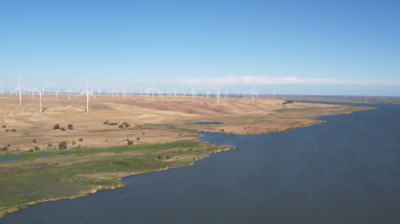California’s High-Speed Rail Project: Approval of the San Jose to Merced Environmental Documents is Essential for Jobs, the Environment, Business Competitiveness and Quality of Life
By Jim Wunderman, President and CEO of the Bay Area Council, Ashley Swearengin, President and CEO of the Central Valley Community Foundation, and Ahmad Thomas, CEO of the Silicon Valley Leadership Group
According to UC Berkeley’s Institute of Government Studies and the Los Angeles Times’ April 2022 poll, fifty-six percent (56%) of registered voters “support the state continuing to build the high-speed rail project.” This week the California High-Speed Rail Authority (Authority) Board of Directors has the opportunity to listen to voters – invest in affordable housing, make a significant dent in greenhouse gas emissions, and continue California’s legacy as an innovation hub for the world. Approval of the San Jose to Merced environmental documents brings the state closer than ever to giving Californians what they want: electrified high-speed rail that alleviates congestion, avoids high gas prices, and addresses the climate crisis.
High-speed rail is good for business, too. When high-speed rail connects Silicon Valley to the Central Valley, passengers will be able to travel from San Jose to Fresno in about an hour at speeds that exceed 200 miles per hour instead of three or four hours by car. That time savings is more than just about convenience, it’s about business competitiveness for our region and state. That kind of connection means businesses can expand and stay in California and more Californians can have access to good-paying jobs and affordable housing. For jobs, the environment, and quality of life throughout the state, these connections matter.
Perhaps most importantly, high-speed rail is part of a series of big, bold and sometimes difficult decisions we must make for the environment. The Authority Board faces its critical decision in the same month that a U.N. intergovernmental panel issued its latest, and most dire report on the state of climate change. That UN report, from a panel of 278 top climate experts, found that we can still take action to reduce the effects of climate change, keeping global warming from exceeding the 1.5 degree mark beyond which would have catastrophic results. But it will take bold action using all the tools in our toolbelt.
High-speed rail is bold! It is by far the greenest, most cost-effective and most practical way to link Silicon Valley and the Central Valley. To shy away from this opportunity for zero-emission trains powered by 100% renewable energy that will provide clean, modern transportation for millions of California residents would be to shrink from our responsibilities now and for future generations. With high-speed rail, we can boost our economy, promote a higher quality of life for the California workforce, and do the right thing for our environment.
It is a big, difficult project and yes, it is a serious investment of time and money. But now is not the time to waver. It is the time to forge ahead. As U.S. Transportation Secretary Buttigieg has said, “There is no reason America has to settle for less when it comes to public transportation.” Other countries have gotten this done. It is standard throughout much of the European Union and Asia. Since 2008, China has constructed more than 23,000 miles of high-speed rail lines. And they’re planning to more than double that in the next 15 years. The lives, economies and environments of Japan, France, Spain, and Italy have improved greatly with the advent of their systems. The United States, and especially California, should not be left behind.
High-speed rail is expensive, but it is the most cost-effective and most practical way to connect the Central Valley to Silicon Valley, a connection that is critical to our future. This week’s decision is a moment to be courageous in support of families who want an affordable place to live and the opportunity to work one of the thousands of good-paying jobs attached to the project. And, it’s about doing everything we can in this generation to preserve a habitable planet for future generations. We know Californians are willing to take bold action. It’s time for regional and state leaders to do the same.





